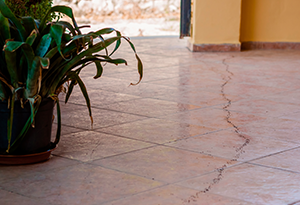Where to Check for Ants in the House
Portland OR - Beaverton OR - Lake Oswego OR - Vancouver WA
 Ants are persistent invaders that can turn your peaceful home into a battleground if left unchecked. To effectively deal with these tiny intruders, knowing where to check for ants in the house is crucial. The experts at Summit Pest Management are here to help you identify the presence of ants and signs of infestation, understand the potential damage caused by ants, find their nests, and highlight common areas where ants tend to congregate.
Ants are persistent invaders that can turn your peaceful home into a battleground if left unchecked. To effectively deal with these tiny intruders, knowing where to check for ants in the house is crucial. The experts at Summit Pest Management are here to help you identify the presence of ants and signs of infestation, understand the potential damage caused by ants, find their nests, and highlight common areas where ants tend to congregate.
Identifying Ant Presence and Signs of Infestation
Ants leave subtle but noticeable signs when they infiltrate your home. Some of the signs are:
- Visible Ant Trails: One of the first signs of an ant infestation is the presence of visible trails. Ants follow scent paths created by their fellow colony members, leading them to food sources.
- Frass (Ant Droppings): Ants leave behind tiny droppings known as frass. These may appear as small, dark specks near their nests or along their foraging trails.
- Audible Rustling Sounds: In some cases, you might hear rustling sounds, especially if the ant colony has established itself within the walls or flooring of your home.
What Damage Can Ants Do and How Do I Find Their Nests?
Ants can cause damage to your home and belongings. Carpenter ants, for instance, excavate wood to build nests, potentially leading to structural damage over time. Other ants may damage food products, contaminate surfaces, or even harm household plants.
Locating the ant nest is a crucial step in effective pest control. Follow ant trails to trace their origin, checking both indoors and outdoors. Common indoor and outdoor nesting sites include:
- Soil
- Mulch
- Tree bases
- In wall voids
- Insulation
- Crawl spaces
Common Areas for Ant Activity
Ants are not randomly scattered throughout your home; they congregate in areas that offer accessible food and water sources such as:
- Kitchen: Kitchens are a hotspot for ants due to the abundance of food sources. Crumbs, spills, and uncovered food can attract ants, especially those seeking sweet or greasy substances.
- Pantry: Pantries are a treasure trove for ants looking for stored food. Improperly sealed containers or neglected spills can provide easy access to ants, inviting them to establish foraging routes. This also applies to your pet food storage!
- Bathroom: Ants are attracted to areas with moisture, making bathrooms a common target. Leaks, standing water, or damp conditions can entice ants who are seeking hydration.
- Living Room: Living rooms may attract ants if food is consumed in these areas. Crumbs from snacks, spilled drinks, or even pet food can become alluring food sources for ants.
- Basement/Crawl Spaces: Dark and secluded spaces like basements or crawl spaces can harbor ant nests. These areas provide shelter and can go unnoticed, allowing ant colonies to establish themselves without immediate detection.
To minimize ant attraction, maintain cleanliness in these areas, seal food – including pet food – items tightly, and fix any leaks promptly.
Expert Ant Removal
While DIY methods can provide temporary relief, the best way to avoid a persistent pest problem is to enlist the help of professional pest control technicians. At Summit Pest Management, our experts have the knowledge and tools needed to efficiently eliminate ant colonies and prevent future infestations. Don’t let ants take over your home – give us a call today to keep your living space pest-free!
Back to Ant Exterminators – Control – RemovalWhere to Check for Ants in the House in Portland OR & Vancouver WA
Serving Portland Oregon & Vancouver Washington
